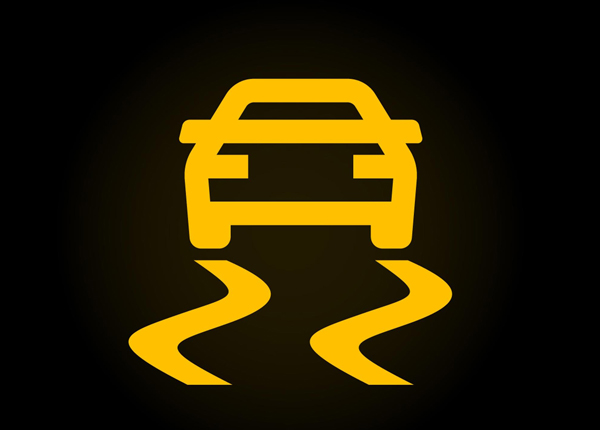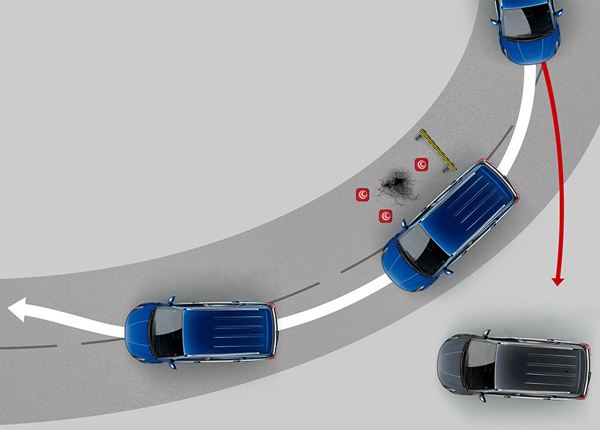
Traction for Drivers: Getting A Grip on How Your Car Handles
Updated Dec. 25, 2020Traction is the grip between tires and the surface of the road, which allows your vehicle to stop, start and change direction. Various factors can decrease traction (reduce your grip on the road) and leave you susceptible to skidding. Understanding how traction works - and what environmental factors can diminish or improve it - will help you maintain maximum control of your vehicle while driving. You must be able to identify the onset of traction loss and know what action to take to correct it. The information in this article could one day save your life.
Factors affecting traction
The texture of the road’s surface is an enormous factor in determining traction. Tire traction is constantly changing depending on the quality of the road. If the surface of the road is too smooth, too rough, too wet or too dry, your tires can lose traction. Damaged and uneven road surfaces can adversely affect traction, as can sand and gravel. While driving, you must constantly be aware of your surroundings and ready to take skid-correcting action should loss of traction occur.
The total weight, weight distribution and condition of your vehicle partially determine how much traction you have. If you frequently drive where loss of traction is a risk – for instance, on poor quality roads or during harsh winters – you should consider these factors when purchasing and maintaining a vehicle. The issues below contribute to traction loss:
- Unaligned and/or unbalanced wheels
- Over-inflated or under-inflated tires
- Worn down tire tread or incorrect tires for the environment
- Malfunctioning or uneven brakes
Adverse weather conditions can diminish traction. Slippery roads caused by the ice, snow and low temperatures of winter are possibly one of the most difficult surfaces on which to drive and maintain traction. Of course, winter conditions often come with the added complication of extremely low-visibility. Snow, ice and wet, slippery roadways can reduce traction to the degree that any sudden braking or acceleration will cause a skid. In fall, slippery leaves collecting on the road could cause a similar level of traction-loss as you might experience hitting a sheet of ice.
Wet road surfaces can occur at any time of year and are most dangerous immediately after a rain shower. This is when the film of water on the road can essentially “lift” your vehicle and cause it to hydroplane or skim across the surface of the water. Hydroplaning can be partial or complete. If all four wheels lose connection with the road’s surface your traction will be reduced to zero and all steering control will be lost.
Certain maneuvers can cause your vehicle to lose traction, even when road and weather conditions are optimal. When a maneuver causes a shift of weight from one part of the vehicle to another, there is a risk of traction loss. Any course alteration or speed change could cause a skid, as each of the below actions results in a weight-transfer:
- Acceleration
- Deceleration
- Turning
- Any combination of these actions
Transferring weight can result in rotation or unexpected movement in another direction. You may have seen this effect in practice in real life or on a television show, when sudden acceleration, braking or taking a turn too sharply causes a balance shift and loss of traction. Generally, this results in the vehicle spinning out of control or sliding off the roadway.
How roadway grades affect traction
The grade of a roadway (how steeply it slopes) can affect your vehicle’s side-to-side weight balance and reduce traction. When driving uphill, you should aim to keep your vehicle lined-up with the upward slope, to ensure the weight is distributed as evenly as possible across all four tires. Where the hill is extremely steep, drivers must maintain a consistent speed by gradually increasing pressure on the accelerator.
Balance and traction loss can occur on hills when a driver travels too fast, panic-stops or applies the brakes too hard – this is also an issue on road curves. To reduce speed to take a curve in the road, you must:
- 1

Brake well before you reach the start of the curve, easing off as you enter the curve.
- 2

If you are still moving too fast through the curve, brake very gently.
- 3

Accelerate slightly at the mid-point of the curve to stabilize the vehicle.
Yellow, diamond-shaped curve warning signs will notify you of an approaching curve, to make sure you have enough time to brake gradually and navigate it safely.
Be aware of other road users
To drive safely and responsibly, you must be aware that making sudden movements could cause other motorists to brake or turn rapidly and lose control of their vehicles. Multi-vehicle collisions are often caused by this “domino effect”, particularly in hazardous weather conditions. You must always adjust your speed below the advertised speed limit when the roadway may be slippery. Likewise, be vigilant and keep an eye on other vehicles who may be driving too fast or apt to make sudden maneuvers.




